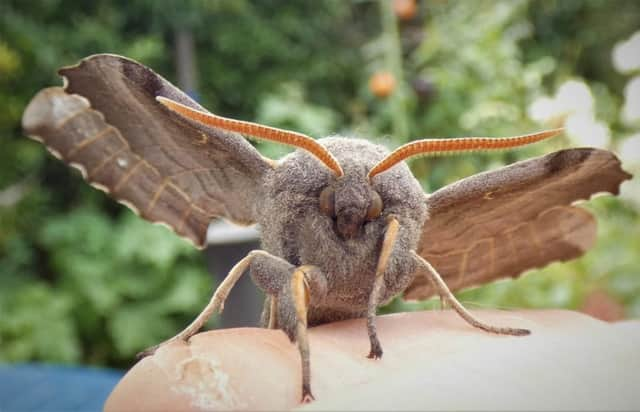Wildlife Column: A flutter of summertime moths...


The most common species are large elephant hawk (food-plant mostly rosebay willowherb), poplar hawk (poplars and willows), and lime hawk (often common lime). The poplar hawkmoth (Laothoe populi), is perhaps the most frequency seen in Britain, member of the large ‘Sphingidae’ family of hawkmoths. It is a common species throughout most of Britain and Europe, and the adult moths have a wingspan of approximately 100mm. Unusual for a Sphingid moth, when at rest, they hold their hind-wings over and above the forewings.
From late June through until September is a good time for moth enthusiasts (technically known as lepidopterists) to be out and about with their moth traps and their sugar. As all readers will know from the hordes of insects currently swarming into evening kitchens and bathrooms for example, moths are attracted to bright lights, although the exact reasons remain obscure.
Advertisement
Hide AdAdvertisement
Hide AdHowever, for the ardent moth-watcher this means you can lure hundreds of unsuspecting moths to a powerful mercury-vapour lamp where they are caught and can be identified prior to release. The Lepidoptera include the familiar butterflies and some day-flying moths, but also huge numbers of night-flying moths too. These are then split into two broad groups, the ‘macros’ (big ones) and the ‘micros’ (usually but not always, small ones).
The other technique for species that don’t come to a lamp is called ‘sugaring’ which involved making a sweet paste of sugar, beer and other alcohol. This is then coated literally onto say a tree stump or even a piece of old rope, and is apparently good to attract ‘old ladies’ which fall to the ground stupefied (though you will be relieved to know these are moths!). Two friends, Paul Ardron and Jan Turner are Lepidoptera experts and we spent an evening ‘mothing’ my garden which was when the lime hawkmoth turned up.
Professor Ian D. Rotherham, of Sheffield Hallam University, researcher, writer and
broadcaster on wildlife and environmental issues